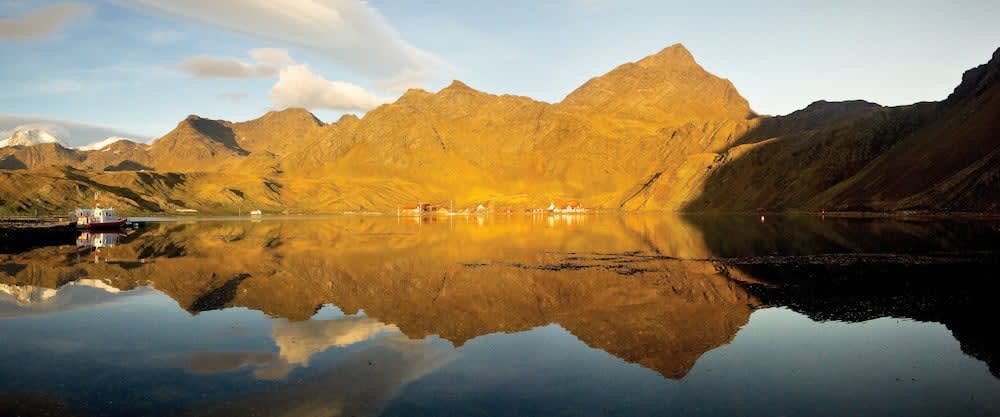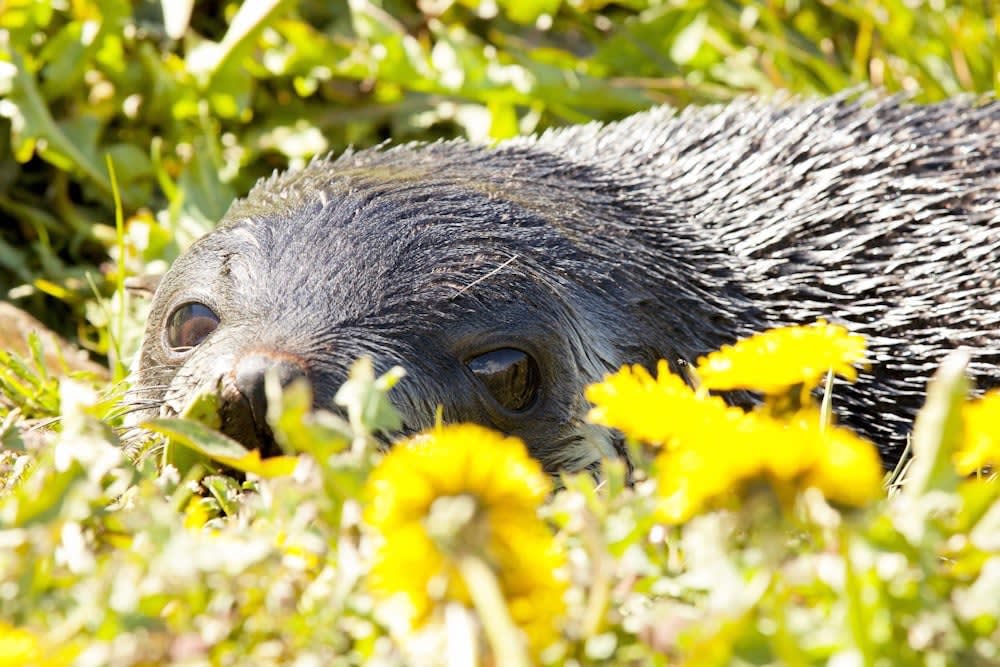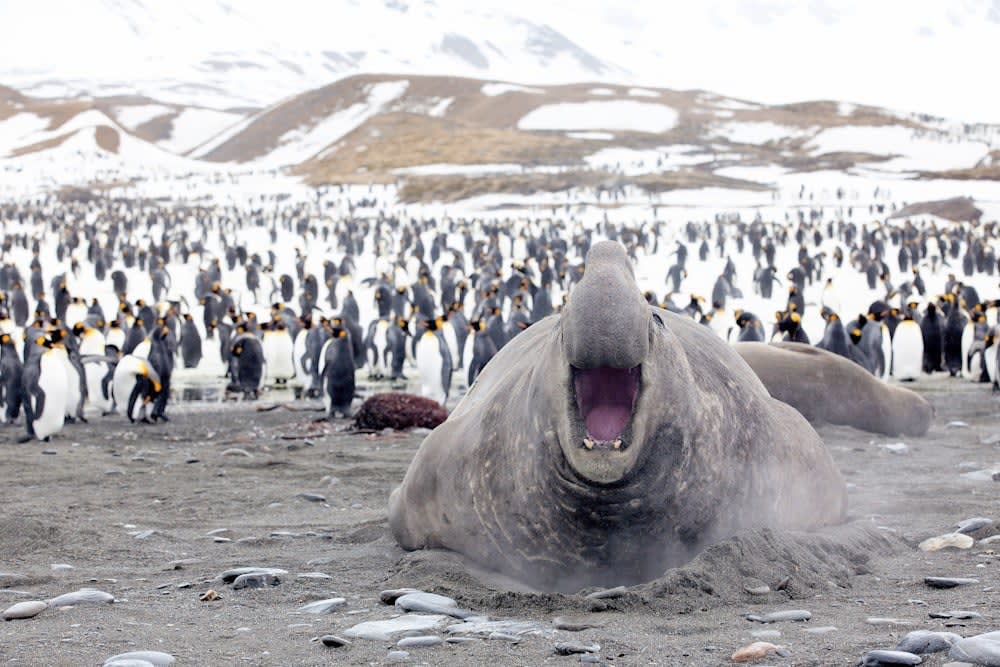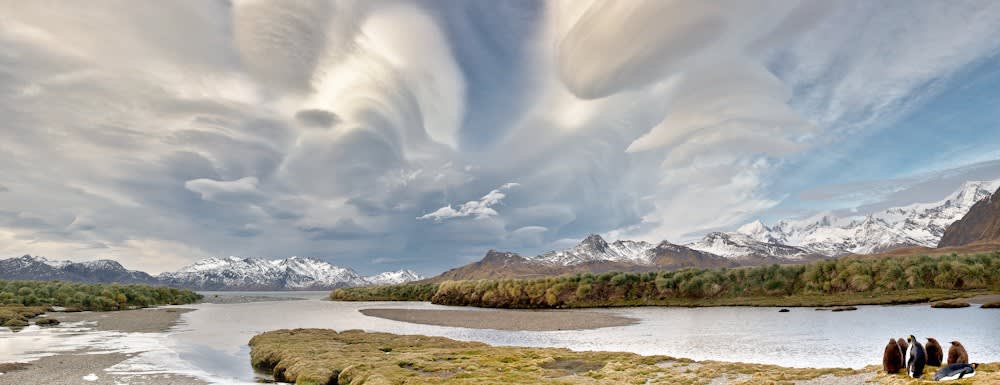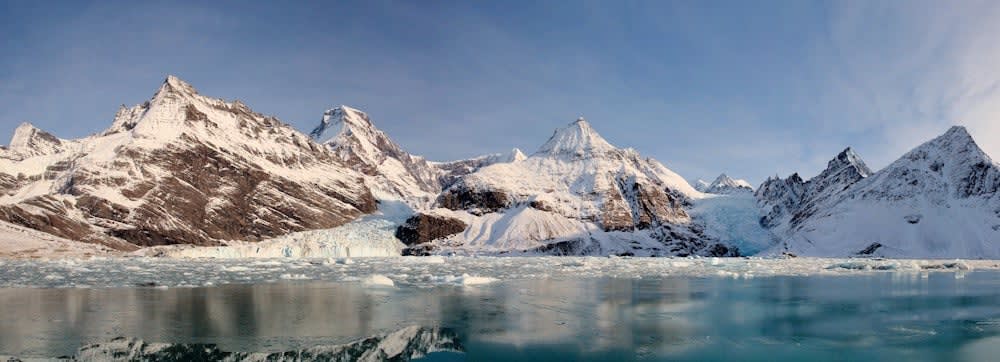Note: This passenger-favorite guest post — recounting the first-hand observations and experiences on living in Antarctica, through each of its varied seasons — was written by one of our very own onboard doctors, Sam Crimmin.
“If you were to take a giant caring knife, slice along beneath the highest mountain ridges of Switzerland, just where the huge glaciers tumble into the valley below, and then dropyour slice of mountain, dripping with sugar-icing, into the sea, I think you would get a fair idea of the place. For it is long and narrow and everywhere the snow covered mountains rise straight from the water, reaching near the centre of the island to a height of over 9,000 feet. Seen from afar on an early spring day, South Georgia is a breathtaking sight and one not easily forgotten.” Niall Rankin, Author of “Antarctic Isle Wild Life In South Georgia”.
From 2010 to 2012, I worked as medical officer for the British Antarctic Survey and lived on the island of South Georgia. My home for that time, the research base at King Edward Point (KEP), houses 35 people in the summer and 12 in the winter. There are no roads so travel is limited to places accessible by foot or by small boats. There is no television and very limited internet access. Food is delivered once a year with fresh supplies every 10-12 weeks. There is the occasional night out on a visiting cruise ship, and the odd holiday on a type 42 British Navy Destroyer. For residents of KEP, the majority of time is spent in Cumberland Bay and the surrounding area.
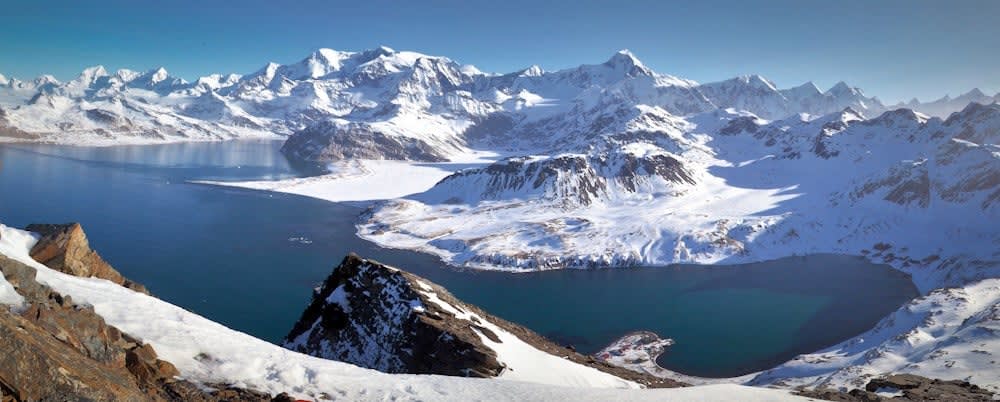 Cumberland Bay from the top of Mount Duse, KEP Reseach Station bottom right
Cumberland Bay from the top of Mount Duse, KEP Reseach Station bottom right
Spring and Summer on South Georgia
Spring and summer on South Georgia are green. Maybe not what you would expect from an Antarctic isle, but as the seasons progress and grasses come back with vengeance, the island begins to earn its name “the Galapagos of the Antarctic”.
As winter ends wildlife returns from the sea and beaches fill until there’s hardly a space not occupied by a seal or penguin. The seal science research area regains its population, and then some. Evans Lake, locally known as Puppy Lake, soon resembles a scene out of Jurassic Park, with water and land teaming with life.
Noises change. In spring, bull elephant seals can be heard from kilometers across the bay. Later, fur seals take over with barks and “ouff chuff” sounds. The king penguin colony on the beach outside the research station grows, the 3AM hooting gets louder.
The light changes. South Georgia isn’t far enough south to get total light or darkness, but as summer turns to autumn, the evening light is spectacular. The kelp in cove glows gold at sunset and sunrises are more and more beautiful. As nights get longer and darker, the night sky becomes a canopy of stars stretching from sea to mountains.
Autumn in South Georgia
In autumn the weather begins to change. Cold winds from the Antarctic peninsula hit the high peaks of the exposed Southern Coast, resulting in incredible lenticular clouds. Cloud watching becomes a favorite pastime.
Winter in South Georgia
Early winter is a time of ice. More and more often the temperature dips below zero. Ice starts to form on the ground. Icicles hang from tussock grass, rock faces and buildings. The sea in cove starts to free over.
Pancake ice forms, and as the tide goes in and out these round flat ice formations wash up on the shore. As it gets colder, sea ice covers the bay. In the calmer part of Cumberland bay – Morraine Fjord – the whole area freezes over.
As winter progresses, early snows get thicker and thicker. For two months of the year travel is by ski or snow shoe only. During August and late winter, snow is so deep that the research station is nearly buried. For six weeks life at KEP is in the shade, as the sun doesn’t reach above the mountains. By September the snow is gradually melting and wildlife is returning for another year.
Returning to South Georgia
 Cumberland Bay ice, photo by Martin Collins
Cumberland Bay ice, photo by Martin Collins
I left the island in Jan 2012 and only stayed away 10 months before I found my way back, this time working on a South Georgia Government Conservation project. To get there I hitched a ride on the Ocean Diamond small expedition vessel. As we approached the island had something new – we sailed through a sea of icebergs fresh up from the Weddell sea!







